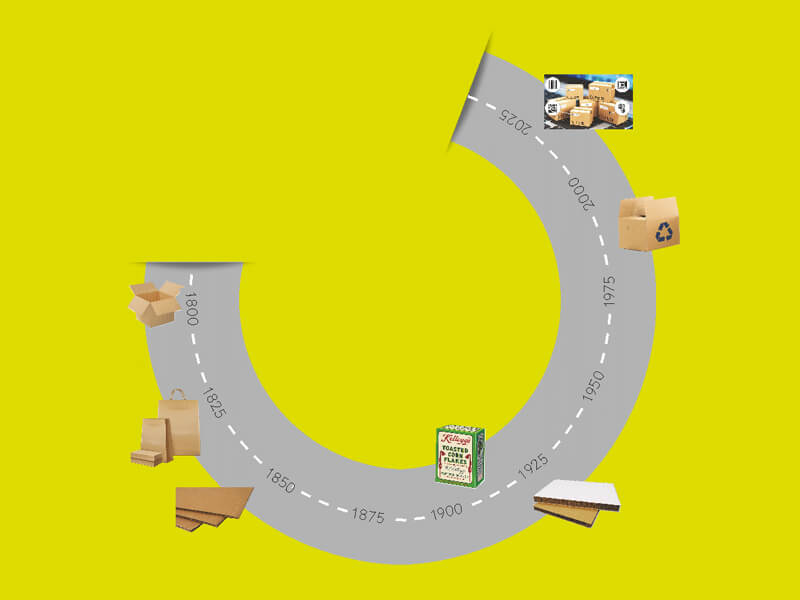
The use of paper for packaging, products like cardboard, paperboard, shipping sacks, and paper bags, began as early as 1817. The types of paper-based packaging, as we know today, have been through a number of huge transformations. Let’s have a look at the origins of paper-based packaging through the timeline.
1817: Where it all began
The first commercial cardboard box was produced in England in 1817.
1844 & 1855: Paper Bags
Initially, the commercial use of paper bags began in the year 1844. In 1852, the paper bag-making machine was invented in the United States.
In the 1870s, glued paper sacks and the gusset design were conceptualised which paved the way for producing paper bags as we know them today.
The 1850s: Rise of Corrugated Paper
The history of corrugated paper dates back to 1850 when the first machine to manufacture multi-layer cardboard was invented. In New York, the first patent for corrugated paper for packaging was filed in the year 1871.
1890: Changed the Course of History
The year 1890 was truly the year of historical significance when we talk about the history of paper-based packaging.
In that year, a Brooklyn-based printer and paper bag manufacturer Robert Gair, by sheer chance, invented the precut box when he was printing paper bags and a metal ruler malfunctioned –ending up in cutting through the bags. That being so, he suddenly realised that precut paperboard boxes could be produced by cutting and creasing paperboard. It was closely followed by when he implemented this idea to corrugated cardboard.
1906: Cereal Packaging
The Kellogg brothers, famously known for coming up with Corn Flake cereal, began using cardboard to distribute and market their cereal products as early as 1906. It was packaged in 100 percent paperboard packaging.
1909: Defining Standards
In 1909, several fiberboard manufacturers came together to form an association – The Fibre Shipping Container Association, to clearly define the quality standards for corrugated boards primarily based on the thickness of facings and bursting strength, measured by the Mullen tester.
The 1940s: Advent of Water-Resistant Corrugated Boards
After World War II, the paperboard mills couldn’t keep their pace with the ever-increasing demand for water-resistant fiberboards. Subsequently, at the time, the kraft board mills and box makers came up with a new type of corrugated paperboard with heavy liners and water-resistant glue.
Watch: Paper Mart News Roundup
1950: Corrugated Containers Division
In the middle of the 20th century, TAPPI (Technical Association of the Pulp and Paper Industry) developed the Corrugated Containers Division that is responsible for developing most of the material test methods used today.
The 1990s: Recycling Impact
The upsurge in recycling in the 1990s further transformed the industry. More Old Corrugated Containers (OCCs) were getting recycled to reclaim the fibers. While the fiberboard content varies depending on recycling, it is still relatively higher in kraft-based content.
Also, Fibre Box Association introduced a modular standard known as the Corrugated Common Footprint.
Also Read: PACKAGING SPOTLIGHT
2010: LCA Test
Corrugated Packaging Alliance introduced, for the first time, the Life Cycle Assessment (LCA) tests for corrugated boards.
The 2020s: Rise of Smart Packaging
With the inclusion of NFC chips, QR codes and temperature sensors and augmented reality, smart packaging will be at the forefront of packaging industry changes in 2020 and beyond.



